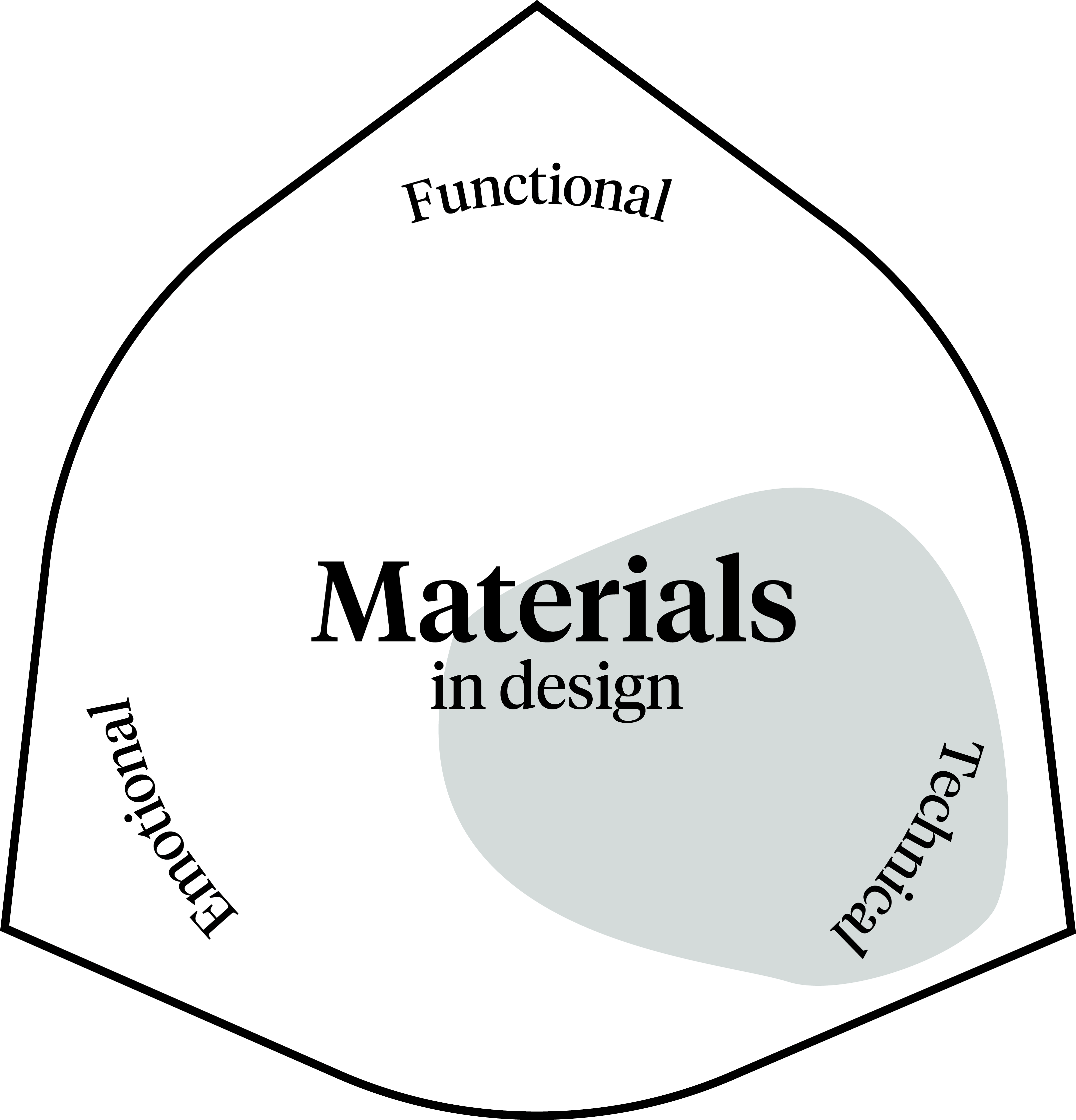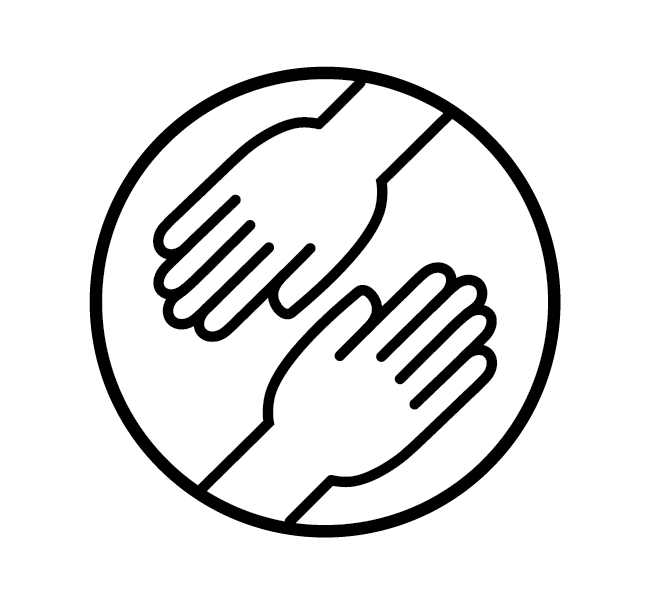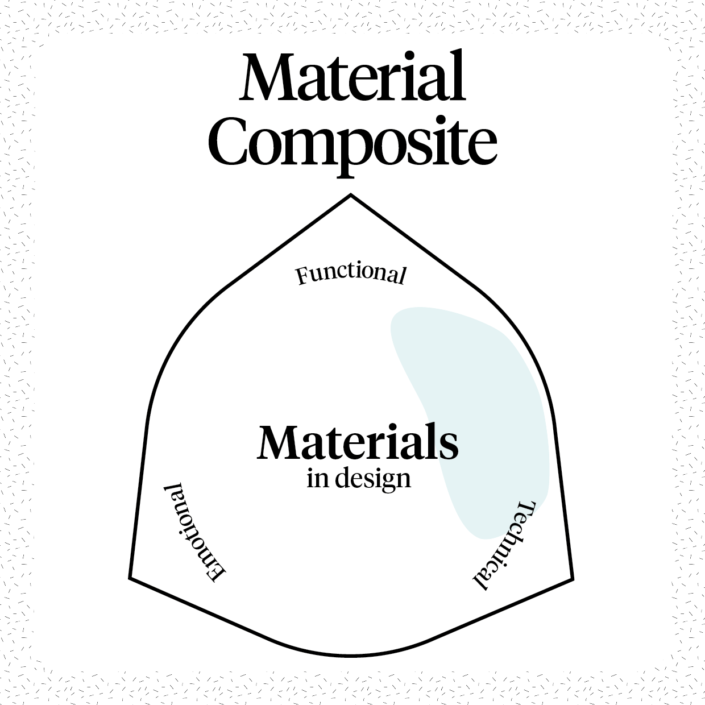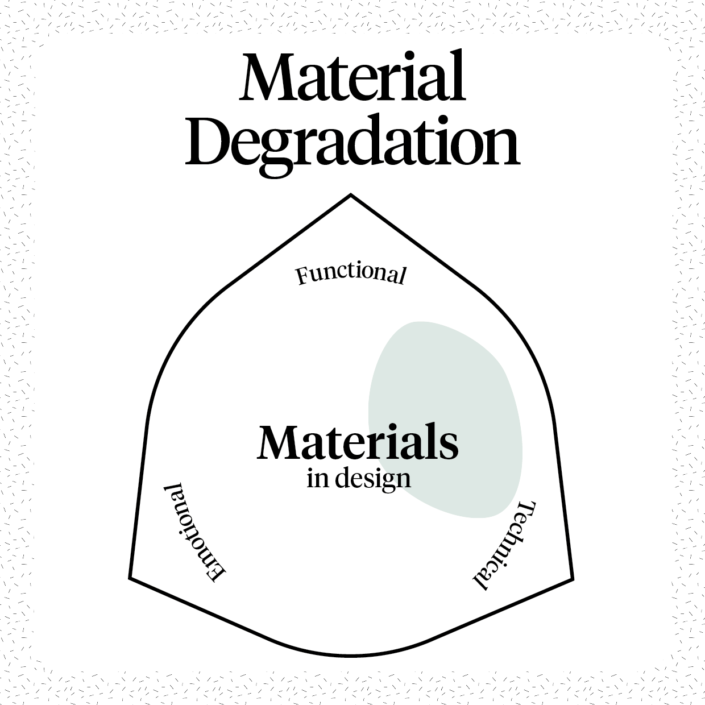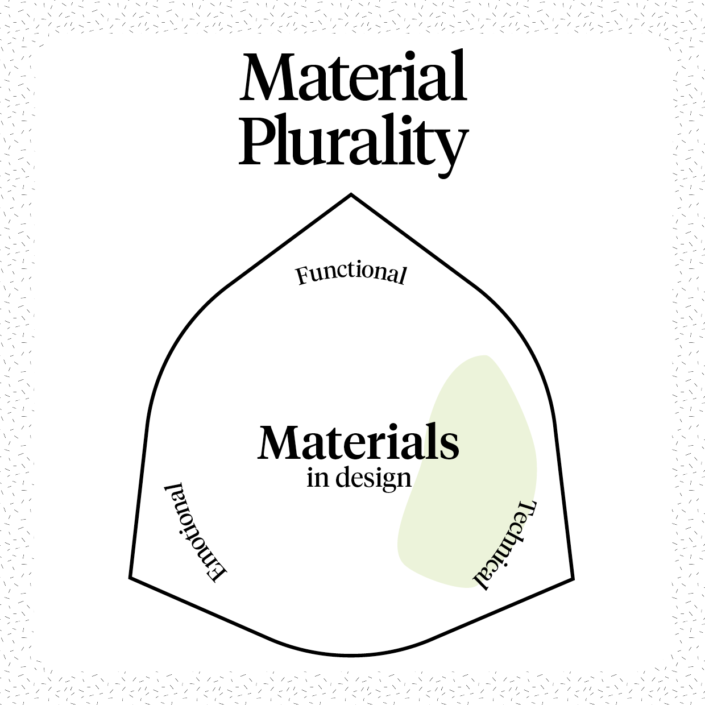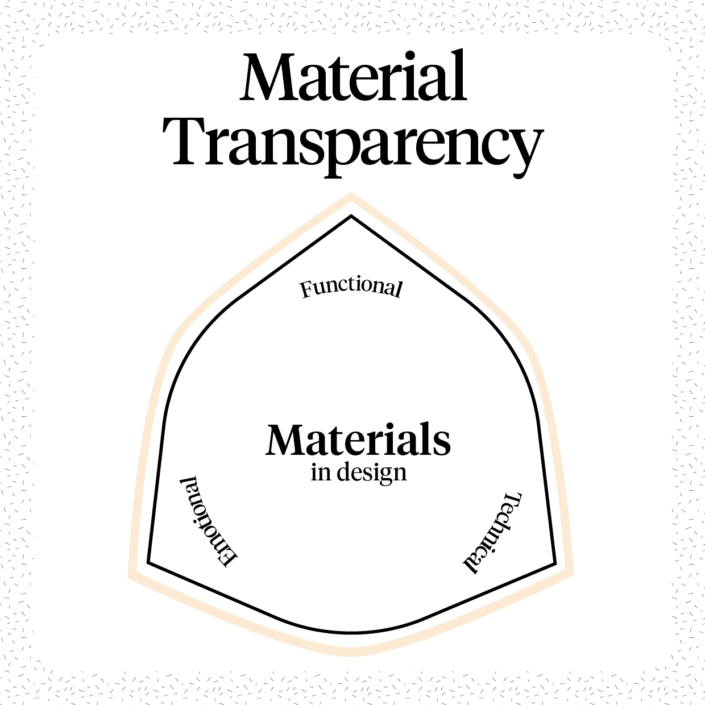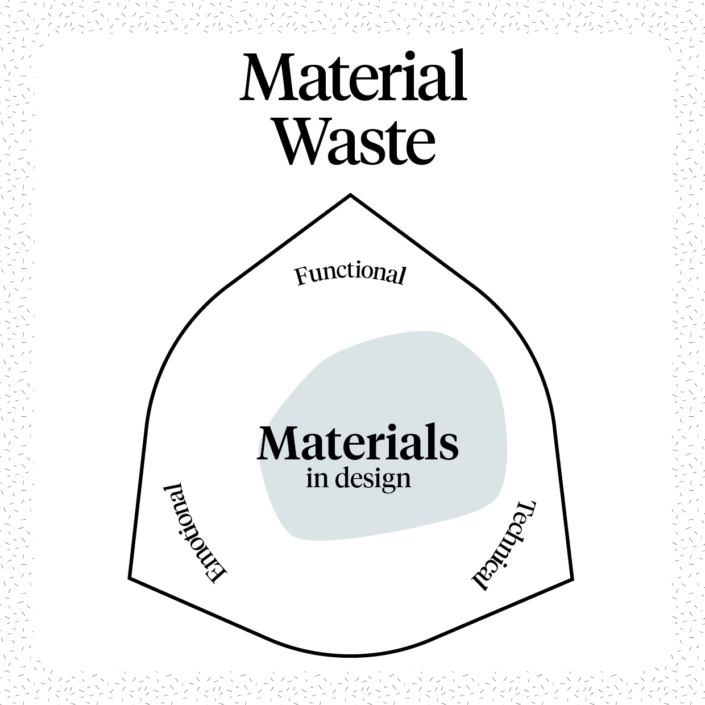What?
Material circulation deals with different means to keep resources in a constant loop. This includes repurposing materials to develop and rework materials into new and other uses, mechanically recycling to alter materials without changing the basic chemical structure, and chemically recycling to degrade and rebuilding materials from their main components.
Why?
Systematised material circulation can improve material quality and choosing the right strategy can support efficient use of resources. Repurposing materials can open up for exploration of new properties, purposes and sensorial expressions, while mechanical and chemical recycling can convert materials from recovered products.
Challenges
- Material circulation is not always cost effective. For chemical recycling of PET, only large-scale plants (50,000 tons/year) are cost efficient.
- Mixed materials can be difficult to separate into individual material streams and non-toxic materials can contaminate other materials.
- Most recirculating processes reduce material properties, so recirculated materials can be less durable and less longer lasting.
Examples
- IonCell is an emerging process that chemically recycles cellulose waste.
- The Mater Ocean chair is made out of mechanically recycled nylon.
- Emily Bode specialises in repurposing rare and forgotten textiles into contemporary unisex workwear garments.
Further Reading
Aguirre (2006). Design for Repurposing: A sustainable design strategy for product life and beyond. University of Monterrey.
Ashby (2013). End of First Life: A Problem or a Resource (Chapter 4). In: Materials and the Environment: Eco-Informed Material Choice. Butterworth-Heinemann, pp. 79–97.
Ragaert, Delva & van Geem (2017). Mechanical and Chemical Recycling of Solid Plastic Waste. Waste Management 69, pp. 24–58.

